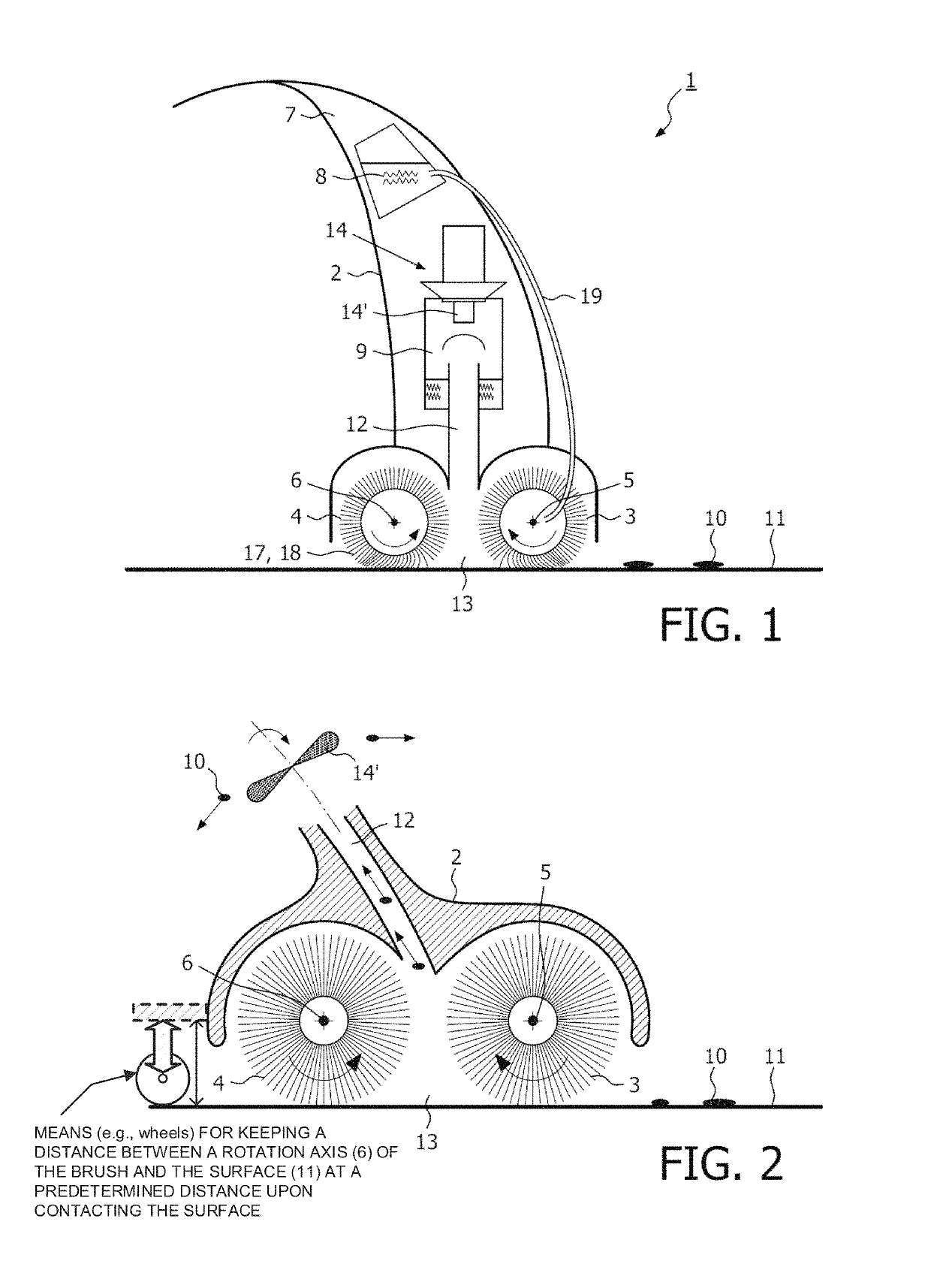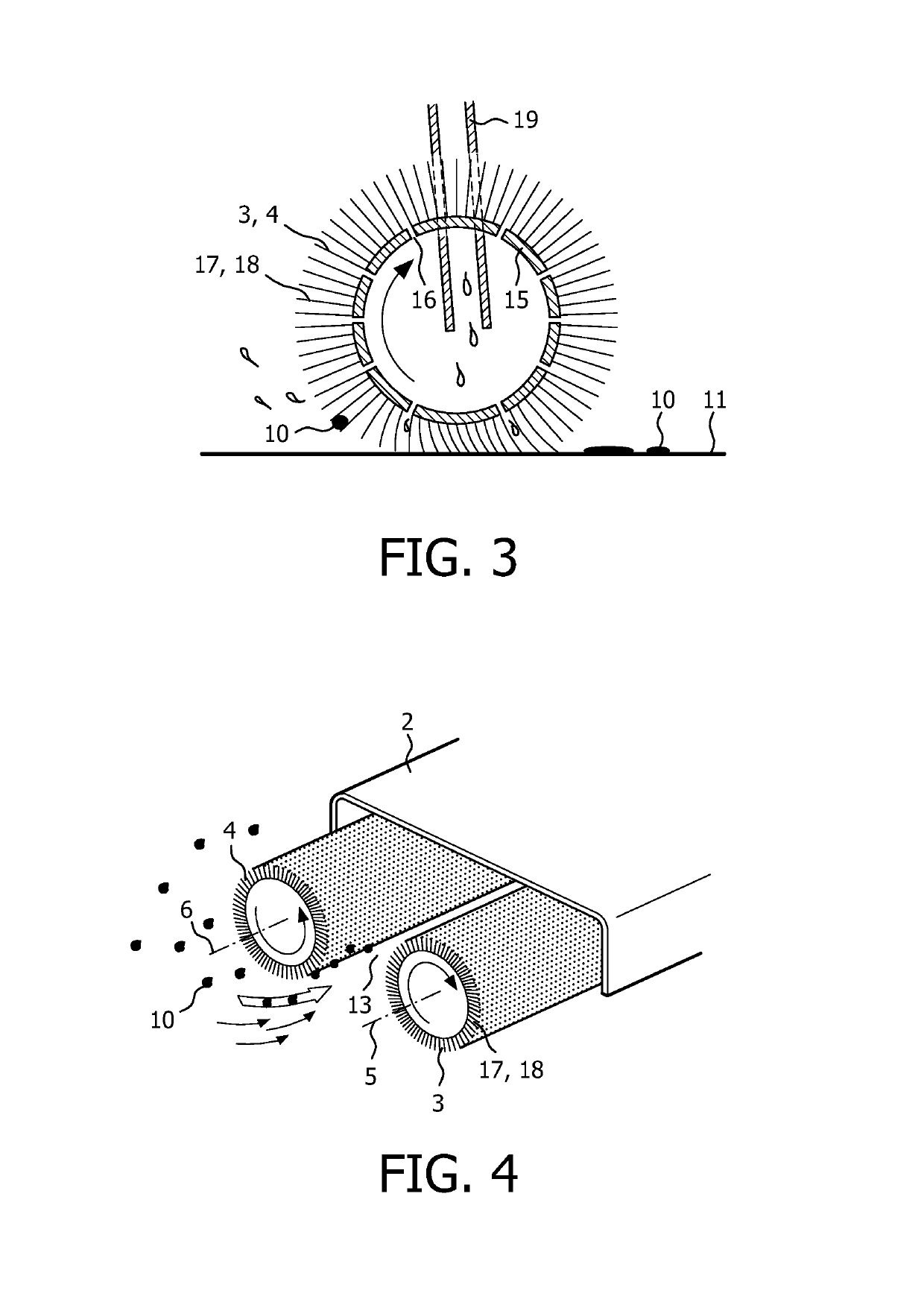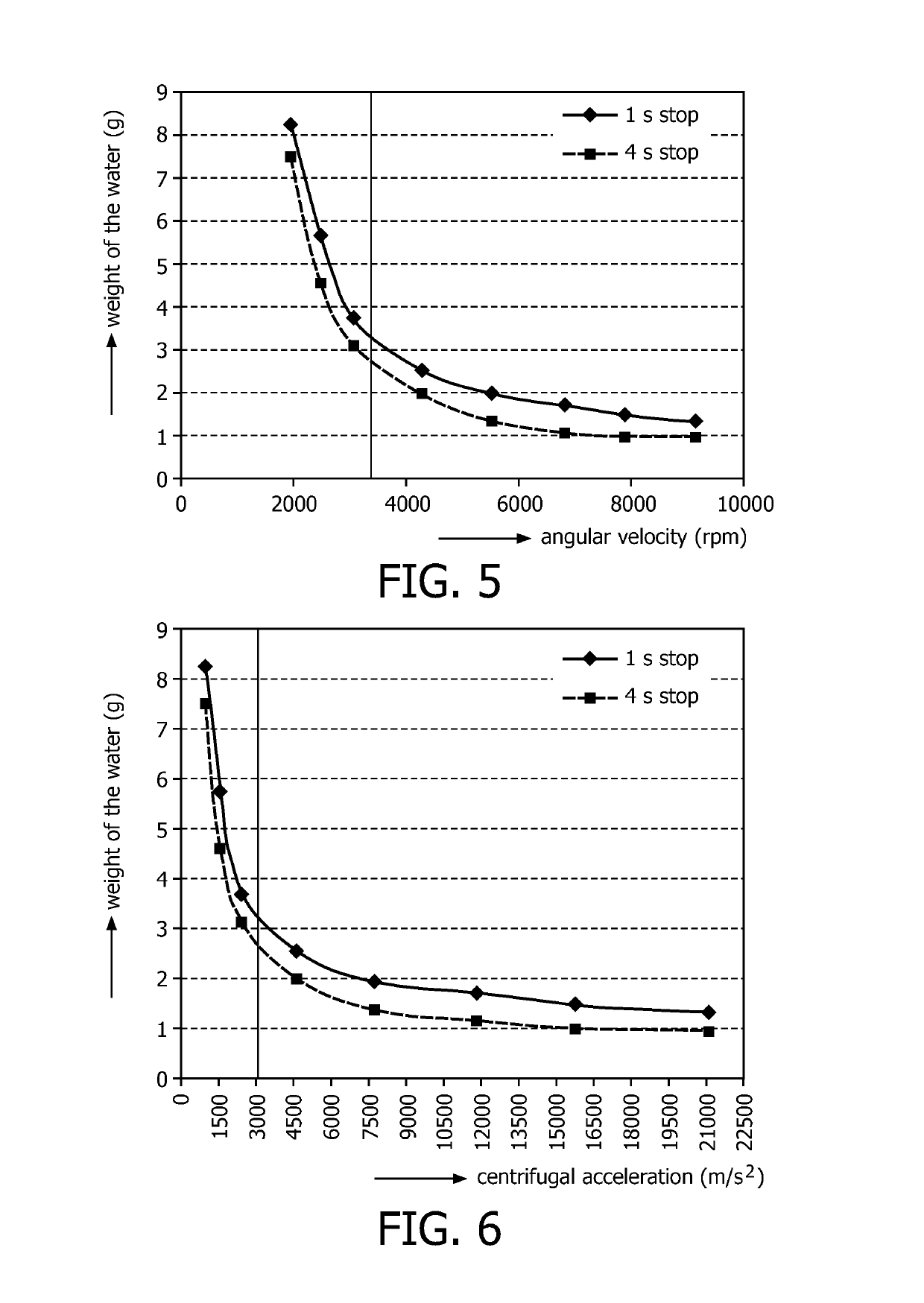Device for cleaning a surface, comprising at least one rotatable brush
a technology of a rotatable brush and a cleaning device, which is applied in the direction of carpet cleaning, vehicle cleaning, bowling games, etc., can solve the problems of increasing the rate at which the brushes suffer from wear and tear, the risk of sticking to the brush once, and damage to the surface, so as to improve the cleaning performance and accelerate the cleaning device according to the present invention. , the effect of increasing the angular velocity of the brush
- Summary
- Abstract
- Description
- Claims
- Application Information
AI Technical Summary
Benefits of technology
Problems solved by technology
Method used
Image
Examples
Embodiment Construction
[0037]FIGS. 1-4 relate to a cleaning device 1 according to the present invention, wherein FIG. 1 provides a view of the cleaning device 1 in its entirety. The cleaning device 1 comprises a housing 2 in which two brushes 3, 4 are rotatably mounted, which brushes 3, 4 are intended for contacting a surface 11 to be cleaned. As indicated in FIGS. 1, 2 and 4 by means of arrows, the brushes 3, 4 are rotatable in opposite directions, i.e. one of the brushes 3, 4 is rotatable in a clockwise direction, and another of the brushes 3, 4 is rotatable in a counterclockwise direction. For the purpose of driving the brushes 3, 4, the cleaning device 1 may comprise any suitable means such as a motor (not shown) which is located at a suitable position in the device 1.
[0038]The brushes 3, 4 may have a diameter which is in a range of 20 to 80 mm, and the driving means may be capable of rotating the brushes 3, 4 at an angular velocity which is at least 6,000 revolutions per minute. A width of the brushe...
PUM
 Login to View More
Login to View More Abstract
Description
Claims
Application Information
 Login to View More
Login to View More - R&D
- Intellectual Property
- Life Sciences
- Materials
- Tech Scout
- Unparalleled Data Quality
- Higher Quality Content
- 60% Fewer Hallucinations
Browse by: Latest US Patents, China's latest patents, Technical Efficacy Thesaurus, Application Domain, Technology Topic, Popular Technical Reports.
© 2025 PatSnap. All rights reserved.Legal|Privacy policy|Modern Slavery Act Transparency Statement|Sitemap|About US| Contact US: help@patsnap.com



